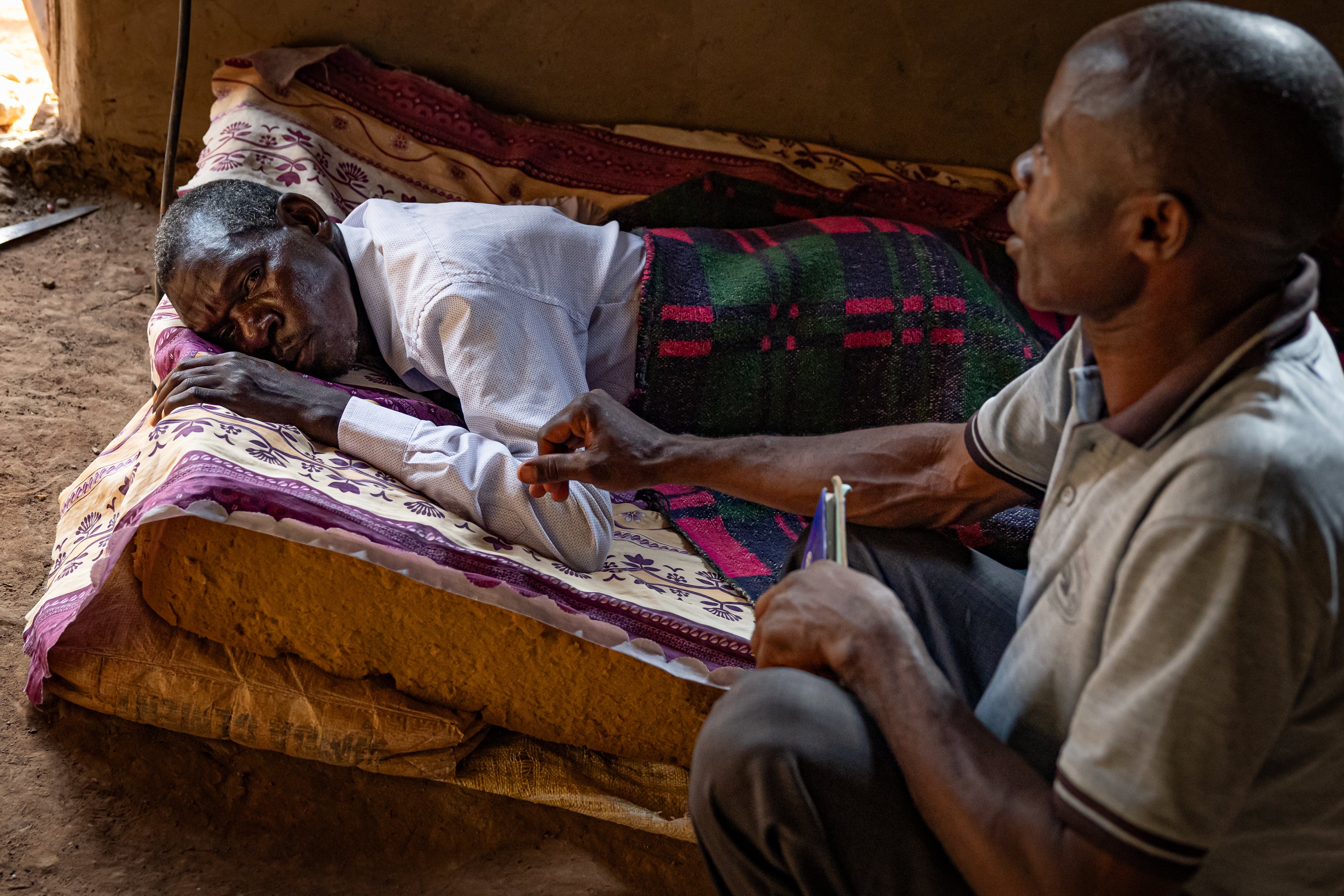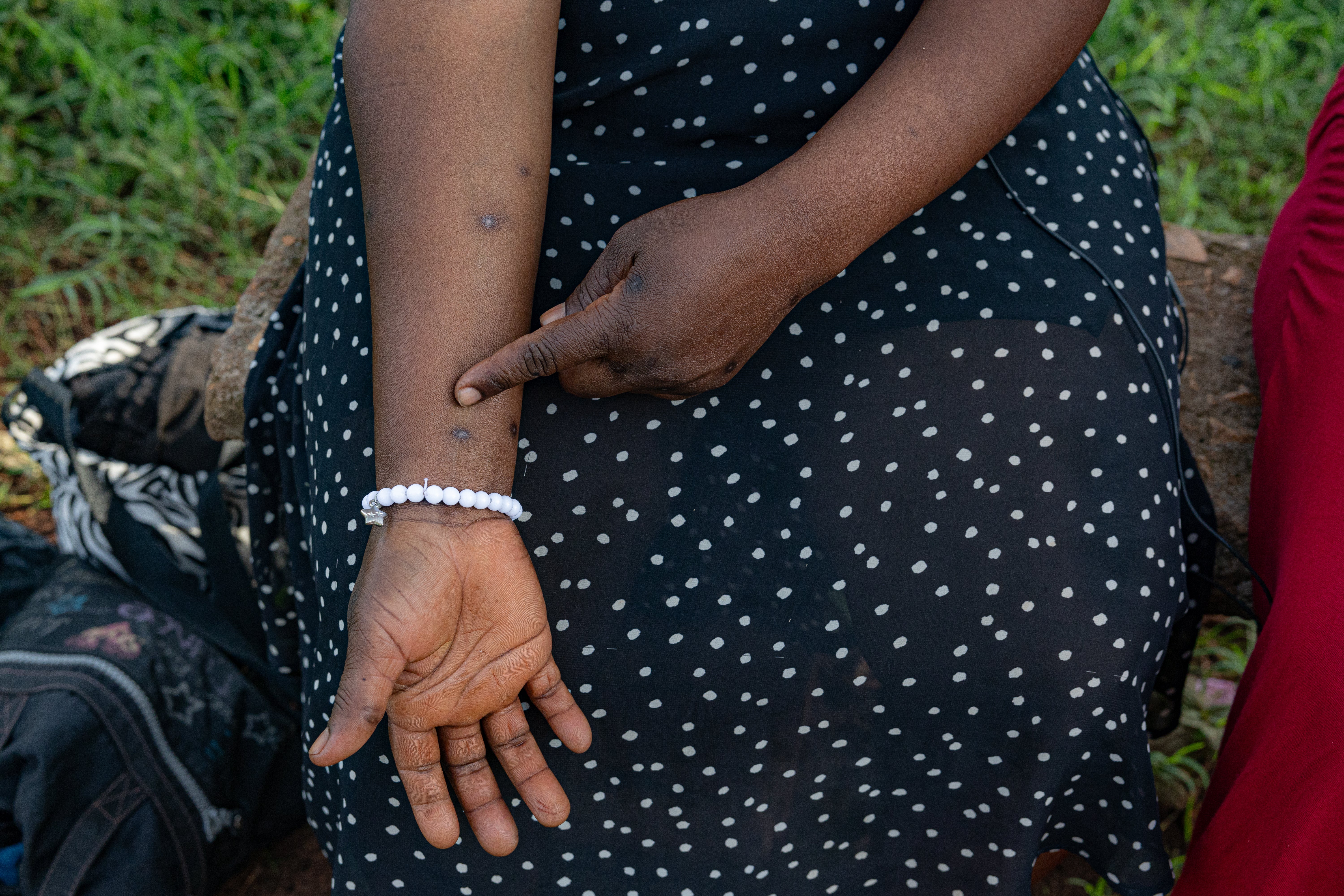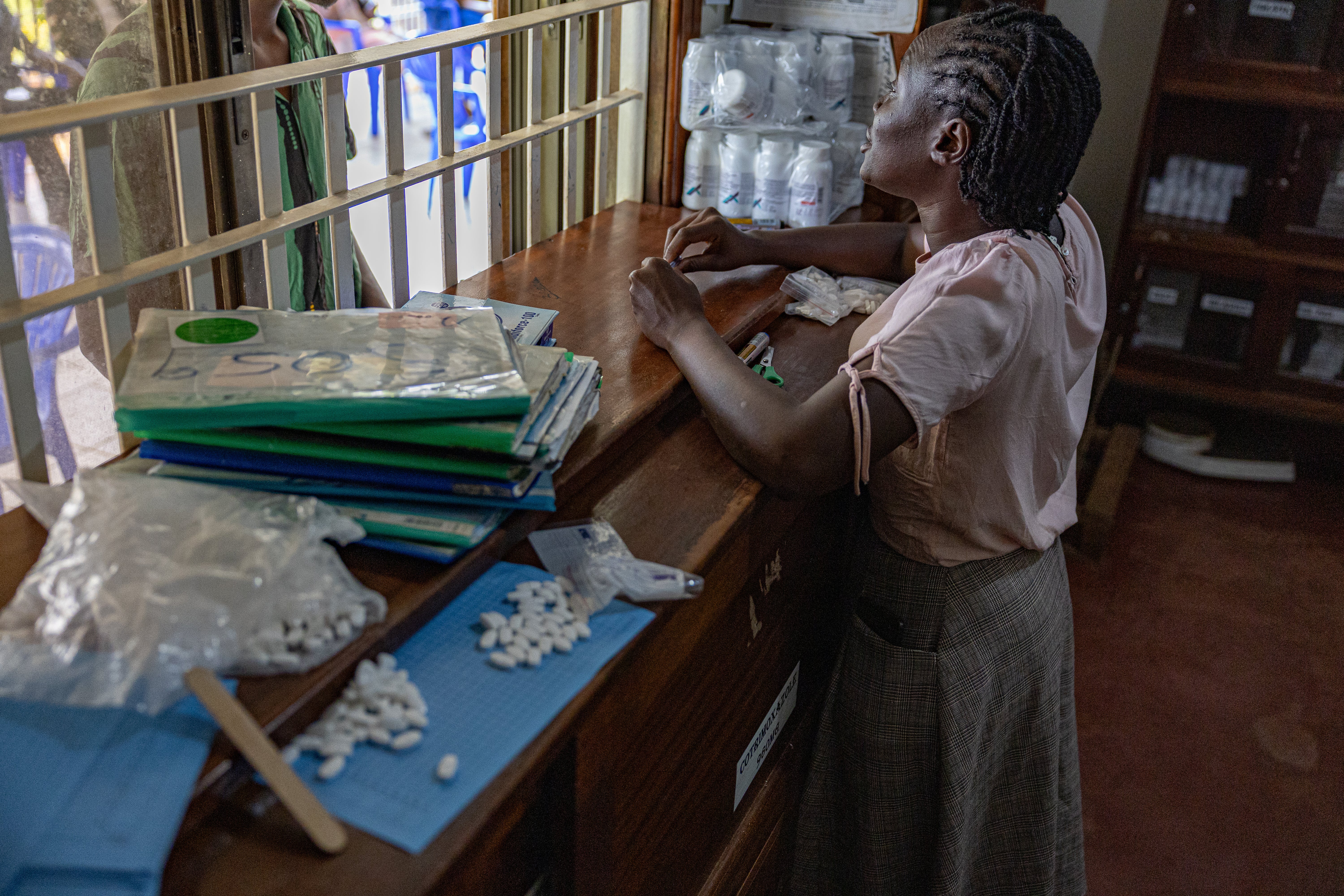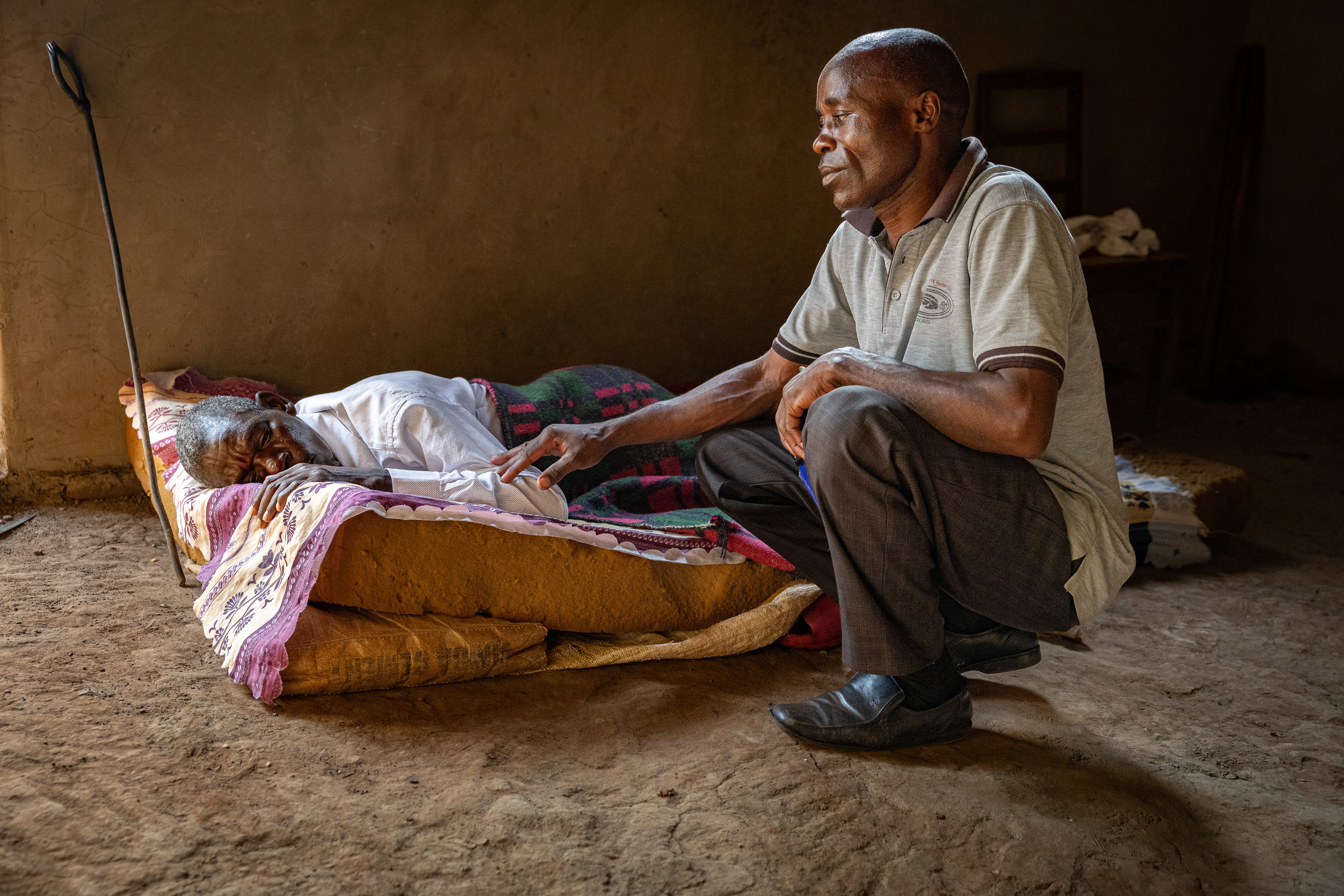‘I can’t protect my unborn baby from HIV’: The stark reality of Trump’s aid cuts

Leaning in pain against the wall of her one-room hut, Hadja, a mother of three, worries about who will look after her children if she dies.
The 27-year-old was unknowingly infected with HIV by her husband before falling pregnant in her village in southern Uganda. Since the US made devastating cuts to its global HIV programmes in January, slashing funding, she has struggled to access her lifesaving medication – drugs that would crucially prevent the transmission of the virus to her baby.
“When you go to the government hospital, they don’t give you the medicine. There are days we go to the hospitals and there are no doctors, days when they don’t have drugs,” she says, explaining that she earns just £1.50 a day making and selling pancakes – far too little to afford antiretroviral medication on her own.
“Our lives depend on medicine – without it, our lives are shortened. If I die, my children will suffer.”

The worst-case scenario is already playing out in a neighbouring village, where James, 50, a father of four, is also HIV positive. Lying in agony on a mattress on the floor, he is watched helplessly by his niece, Beatrice, who – along with her teenage daughter – also has the virus. None of them have had access to HIV medication for over a month and a half.
Without antiretroviral drugs, James’s emaciated body is shutting down, infection by infection. Beatrice knows that she and her 14-year-old may be next.
“I’m worried because my daughter has started showing symptoms – her body itches, and sometimes she loses her eyesight,” she says, her voice a whisper. “I am afraid of what may come, and so is my daughter. She keeps asking, ‘How are we going to survive, Mum?’”
In a shocking move during the first few days of his presidency, Donald Trump signed an executive order that froze almost all foreign assistance for 90 days while programmes were reviewed to ensure they aligned with “American interests”.
That meant a halt in funding to the Emergency Plan for Aids Relief (PEPFAR), which was first introduced by another Republican president, George W Bush, in 2003 and is widely regarded as one of the world’s most successful responses to a global disease crisis, saving tens of millions of lives.
Trump’s actions included a stop-work order and a funding freeze for current and future projects, disrupting supplies and treatment, and impacting 20 million people worldwide.
Although a waiver was later issued by Marco Rubio, the US secretary of state, to continue certain lifesaving services, it’s unclear how or if it is being implemented on the ground.
Angeli Achrekar, deputy executive director at UNAIDS, says part of the challenge is that most of the data collection, monitoring, and implementation programmes – the “service delivery ecosystem” as she calls it – were funded by PEPFAR and are now on hold.
And so some 35,000 estimated deaths have already been linked to the sweeping freezes, according to calculations from the PEPFAR Impact Tracker.
In fact, Achrekar says the world was actually on track to end the global Aids pandemic by 2030, but that will be “impossible” if these cuts and disruptions continue.
TheIndependent’s own calculations from UNAIDS data show that, if funding is not reinstated and nothing changes, Aids-related deaths will jump by 4 million people by the end of the decade – reaching the devastating levels of the 1990s and early 2000s.

At the same time, there would be an additional 6 million new infections, including 1 million children, due to mother-to-child transmission – which is what Hadja fears the most.
“We’re talking about an additional 2,300 new infections every single day, there’s no way we can get to the end of Aids if we continue to have that number,” Achrekar adds grimly. “With these numbers of new infections, we cannot turn off the tap,” she said.
The Independent reached out to the US State Department which would not publicly confirm that PEPFAR would be fully reinstated.
Secretary of State Marco Rubio has said he wanted PEPFAR to continue, but that it should get smaller over time. Limited services including for pregnant women and new mothers have already been told they can continue work. But on the ground, lack of clarity and resources means those services are still disrupted.
In Zimbabwe and Uganda, two countries where PEPFAR funds at least 60 and 70 per cent of national HIV spending respectively, healthcare workers and patients say that supplies are running low, clinics are closing, government hospitals are being forced to turn patients away – and people are dying.
In fact, in Uganda, according to UNAIDS projections, if PEPFAR support is discontinued and no alternative steps in, the HIV-related death toll could skyrocket fivefold and the number of new infections could nearly quadruple by 2030.
The most urgent concerns are for vulnerable and high-risk populations, such as sex workers like Rose, 36, a mother of five in Jinja, southern Uganda.
She became HIV-positive after contracting the virus from her violent husband who repeatedly raped her. He later died from the illness: the penniless single mother was forced into prostitution to support her family.

She had been living on antiretroviral drugs (ARVs) provided by government clinics and charities, which not only protected her own life but also prevented her from spreading the virus to clients. Since the US aid cuts, she says she has struggled to get the medication and has been turned away from hospitals.
Earning just £6 a day as a sex worker, she cannot afford the £56 a month she says her HIV medication costs at the pharmacy.
“I earn just [a few pounds a day], which I have to use for the children – for school fees, rent and food. Some days I cannot even get a customer and I have to take out loans,” she says, showing her arms, now scattered with lesions, bruises and other marks – telltale signs of infection.
“That’s why I miss out on my medication – because I don’t have money to buy it. Some days, we only have lunch and no supper. Just one meal a day.”
She worries about spreading the virus to her clients, many of whom refuse to wear condoms.
“We risk a lot with this job. We are begging for the US funding to come back.”

The chaos is reflected in the clinics. At the Family Hope Centre nearby in Jinja, healthcare workers say that all their funding – including even rent, water, and electricity bills – came from US government funding. In January, the centre was forced to shut down for over a month, turning away more than 5,000 patients.
Due to overwhelming need, they have since reopened, now staffed by just nine of the original 37 workers, all volunteering without pay. The future remains uncertain: the rent of the clinic building was due to expire the day of The Independent’s visit, and they had only two months’ worth of drug supplies left.
Dr Daniel Wambuzi, the clinic’s now-volunteer clinical director, says one of their most immediate concerns is the development of medication-resistant HIV strains caused by treatment gaps.
“If we don’t reverse this, we are going to see resistant strains. The situation is going to go back ten years. The transmission rate will go up. The fatality rate will go up. We’ll see a reversal of all our progress,” Dr Wambuzi warns.

Epidemiologists fear that the number of HIV patients developing resistance to their antiretroviral medication could double in the coming years if these disruptions continue and infections rise.
This is something that worries Laurence, 19, who was born with HIV, and panicked when he turned up to the clinic in January only to find the gates locked.
“I wanted to drown myself. I felt like there was nowhere else to get my medicine,” says the teenager, who had hoped one day to become a doctor who treated HIV/Aids patients himself.
He fears that any further gaps in his treatment will cause resistance and mean he needs more expensive alternatives.
He is currently on first-line antiretrovirals, which, according to UNAIDS, cost on average $64 (around £48) per person per year in lower-income countries. But anyone who develops multi-drug resistant strains of HIV may need second- or third-line treatment, which costs at least $405 a year – a sixfold increase.
“No funding means no medicine – which means no future,” Laurence adds.
Another risk is a return to the dark days of mass deaths, and a surge in children orphaned by the pandemic, which again has hit sub-Saharan Africa the hardest.
UNAIDS say that, if PEPFAR programmes are not sustained, by 2030 an additional 3.4 million children will have lost a parent to Aids-related causes.

In eastern Zimbabwe, that reality is already here. Promise Masawi, 36, a volunteer health worker who looks after families in a farming community, is already caring for two children whose parents died from HIV/Aids in recent months.
“It’s unbearable because we don’t have the proper financial means to ensure these children’s survival,” she says, comforting 15-year-old Hardlife, whose parents both passed away in February after being unable to access medication.
She says most people in the rural community are HIV positive, but treatment access is scarce.
“Unfortunately, there are no facilities to help control or reduce the number of infections – yet there is no medication,” she adds.
Hardlife says his father died first, and then his mother desperately searched for medicine as her condition worsened, developing lesions and losing her hair.
“She would find very little or sometimes nothing at all,” he says quietly.
“It pained me so much, I was her only child who was around when she fell sick, so I am the one who was supposed to help her live. But it didn’t work.”
Hardlife – who speaks with a maturity far beyond his 15 years – says he wants to be a pilot and “travel to Europe” where there are opportunities and better healthcare.
He now lives with his grandmother, and Promise checks in regularly. “It’s painful,” he adds. “But we have to accept that now, it’s part of life.”
This article is part of The Independent’s Rethinking Global Aid project
